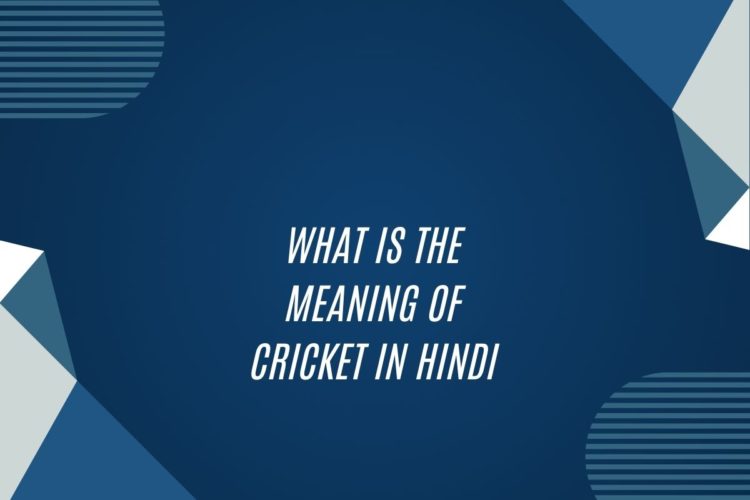Meaning of Cricket
Cricket is a popular sport played with a bat and a ball. It involves two teams, each consisting of eleven players. The objective is for one team to score more runs than the other by hitting the ball and running between two sets of wickets. The team that scores the most runs wins the match.
The game of cricket is known for its strategic elements and requires skill in both batting and bowling. Matches can last several hours or even days, depending on the format being played. Cricket is not just a sport, but a way of life for many individuals around the world, fostering a sense of camaraderie and sportsmanship among players and fans alike.
Origin of Cricket in Hindi
Cricket has been an integral part of Indian sports culture for centuries. The game was introduced to India during the British colonial rule, becoming popular among the locals and gradually evolving into a national obsession. The British brought cricket to India in the early 18th century, using it as a means to socialize and assert their cultural dominance.
As the game gained popularity among the Indian elite, it slowly trickled down to the masses, becoming a symbol of unity and national pride. Over the years, cricket became deeply rooted in the Hindi culture, with fans across the country passionately following the sport and supporting their favorite teams and players. The evolution of cricket in India has seen the rise of legendary players and iconic moments that have left an indelible mark on the nation’s sporting history.
Evolution of Cricket in India
Cricket in India has come a long way since its introduction by the British during the colonial period. Initially considered a sport for the British elite, cricket soon gained popularity among the Indian masses. The first recorded cricket match in India took place in 1721, with the sport gradually spreading across the country through the efforts of enthusiastic players and administrators.
Over the years, India has established itself as a cricket powerhouse on the international stage. The iconic victories in the 1983 Cricket World Cup and the 2007 T20 World Cup sparked a cricketing revolution in the country, leading to an influx of young talent and a surge in interest among fans. The Indian Premier League (IPL), launched in 2008, revolutionized the game further by blending cricket with entertainment, making it a lucrative career option for players and a source of entertainment for millions of viewers.
Significance of Cricket in Hindi culture
Cricket holds a special place in the hearts of those who are deeply immersed in Hindi culture. It transcends mere sport and becomes a cultural phenomenon where emotions run high and unity is fostered. The game of cricket seamlessly integrates into the fabric of Hindi culture, giving people a common ground to connect, celebrate, and bond over the sport.
For many in Hindi culture, cricket is not just a game, but a way of life. It serves as a reflection of values such as teamwork, resilience, and passion. The spirit of cricket resonates deeply within the community, bringing people together irrespective of their backgrounds, uniting them under a common love for the sport.
Rules and regulations of Cricket in Hindi
Cricket, being a game of intricate rules and regulations, requires a thorough understanding for active participation. The laws of cricket, as laid down by the Marylebone Cricket Club (MCC), encompass various aspects governing the conduct and gameplay. These regulations cover an extensive array of topics, including fielding positions, bowler actions, and dismissals, to ensure fairness and sportsmanship in every match.
For instance, the rules dictate that a cricket team consists of eleven players, with one designated as the captain. The fielding team must have all players positioned strategically on the field, with specific regions defined for the bowler, wicket-keeper, and fielders. In terms of bowling, a bowler must adhere to the legal bowling actions to deliver the ball, avoiding any form of chucking or illegal movements. Additionally, the laws specify different modes of dismissals, such as being bowled, caught, lbw (leg before wicket), run out, and stumped, each with its own set of criteria for a player to be declared out.























